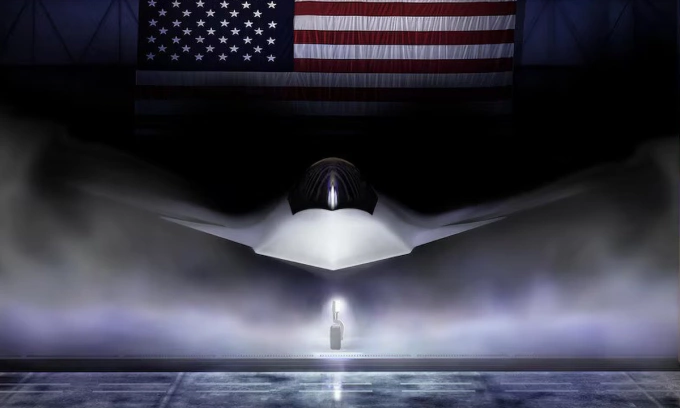
F-47: America’s Next-Gen Stealth Fighter Poised to Dominate the Skies
The U.S. Air Force (USAF) has unveiled plans to field at least 185 F-47s—its sixth-generation air superiority fighter—marking a bold leap forward in America's aerial dominance and a key milestone in modernizing its combat fleet.
The F-47 stands at the heart of the Next Generation Air Dominance (NGAD) program, a sweeping initiative aimed at replacing the aging F-22 Raptor with a more advanced, AI-integrated, stealth-capable fighter. Unveiled by President Donald Trump in March, the F-47 is positioned as a technological game-changer and a cornerstone of U.S. air superiority for decades to come.
With an initial development budget of $20 billion—potentially rising to hundreds of billions—the F-47 promises cutting-edge capabilities: next-gen stealth, AI-assisted decision-making, and seamless coordination with unmanned aerial vehicles (UAVs). However, the program also faces challenges related to cost, timeline, and operational feasibility in a rapidly evolving threat environment.
The Global Race for Air Supremacy
America's adversaries, particularly China and Russia, have made significant strides in military aviation. China’s J-20 stealth fighter is already operational, with sixth-gen designs like the J-36 and J-50 in the pipeline. Russia is also advancing its MiG-41 project with highly ambitious capabilities.
These developments have fueled urgency within the USAF, whose fifth-gen platforms—F-22 and F-35—may fall short against next-gen threats, especially in contested anti-access/area-denial (A2/AD) zones.
The NGAD initiative, launched in the early 2010s, focuses on building a “system of systems” anchored by a manned fighter supported by collaborative combat drones (CCAs).
The F-47’s name pays tribute to the WWII-era P-47 Thunderbolt, the Air Force’s founding year (1947), and the 47th U.S. President, Donald Trump. According to Gen. David Allvin, USAF Chief of Staff, the F-47’s X-plane prototypes have logged hundreds of flight hours since 2019 under DARPA funding, validating advanced design concepts and reducing development risk.
When the USAF revealed in 2020 that a full-scale NGAD demonstrator had already flown, it sent shockwaves through the global defense community—proof of the program’s rapid progress.
Trump later announced Boeing as the lead contractor for the $20+ billion F-47 project, a major win over rival Lockheed Martin and a boost for Boeing’s defense operations in St. Louis, Missouri.
Unmatched Tactical Performance
Gen. Allvin describes the F-47 as a high-performance fighter designed to surpass all fifth-gen limits. Its combat radius exceeds 1,000 nautical miles—double that of the F-22—making it ideal for long-range missions in the vast Pacific theater.
Capable of speeds over Mach 2, the F-47 is optimized for advanced combat scenarios. Its stealth coatings require less maintenance than previous fighters, boosting mission readiness. A modular open-system architecture and digital design enable quick upgrades to software, sensors, and weapons, ensuring long-term relevance.
A standout feature is its ability to operate alongside AI-enabled drones like the YFQ-42A (General Atomics) and YFQ-44A (Anduril), which have combat radii of nearly 1,300 km. These UAVs can conduct reconnaissance, electronic warfare, or strike missions—amplifying the F-47’s versatility and lethality.
The USAF plans to deploy over 1,000 CCAs to work in tandem with the F-47, forming a powerful human-machine hybrid force that reduces pilot workload and increases survivability in contested airspace.
AI will assist pilots with real-time decisions, similar to the F-35’s sensor fusion system. The F-47 will also feature GPS-independent navigation and secure high-bandwidth data links—critical in electronic warfare environments. These technologies give it a distinct edge in beyond-visual-range (BVR) engagements where long-range air-to-air missiles dominate.
Costs and Controversy
The biggest hurdle for the F-47 is cost. Former Air Force Secretary Frank Kendall estimates each jet could cost between $160 million and $300 million—2–3 times the price of an F-35 and comparable to the B-21 stealth bomber.
NGAD development is expected to exceed $20 billion between 2025 and 2029, with total lifecycle costs possibly reaching hundreds of billions. Budget concerns led Kendall to pause the program in 2024, triggering a design reassessment aimed at cutting costs. A December 2024 review reaffirmed NGAD’s necessity—but financial viability remains in question.
The Air Force aims for the F-47 to achieve initial operational capability between 2025 and 2029, an ambitious timeline. Yet, past experience with fighter programs suggests technical and logistical challenges could delay rollout. Integrating AI, stealth, and UAV support into a cohesive platform may require breakthrough innovations—and time.
While Trump touts the F-47 as a strategic deterrent, some analysts warn it could ignite a new arms race, pushing rivals like Russia and China to fast-track similar systems.
Still, with its unprecedented capabilities, the F-47 positions the U.S. to maintain aerial superiority in the face of rising global competition. More than just a new aircraft, it could redefine the future of global air power, writes Stephen Losey of Defense News.
(Sources: Defense News, Flight Global)
Hello Shuttle will strive to bring the latest updates. At the end of the day.
Are you looking for reliable airport and cruise port transfer services in Los Angeles?
We offer professional, safe, and punctual transportation from
Los Angeles Airport - LAX
Long Beach Airport - LGB
John Wayne Airport - SNA
San Pedro cruise port
Long Beach cruise port
Disneyland
and other destinations.
Let us make your journey stress-free and comfortable with our dedicated drivers and high-quality vehicles. Book now for the perfect travel experience at www.helloshuttle.com or call 944-800-5678!


